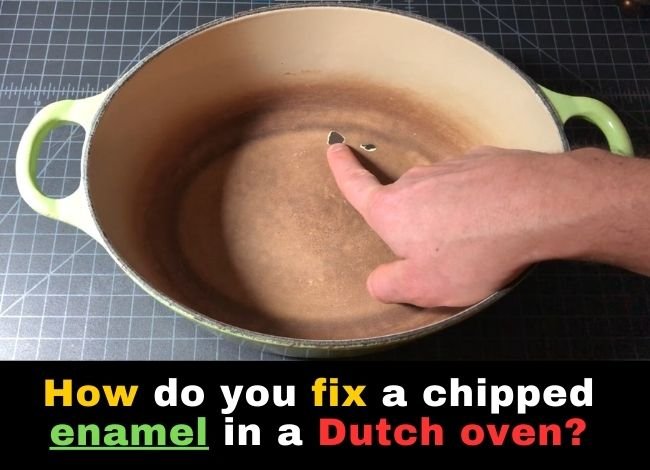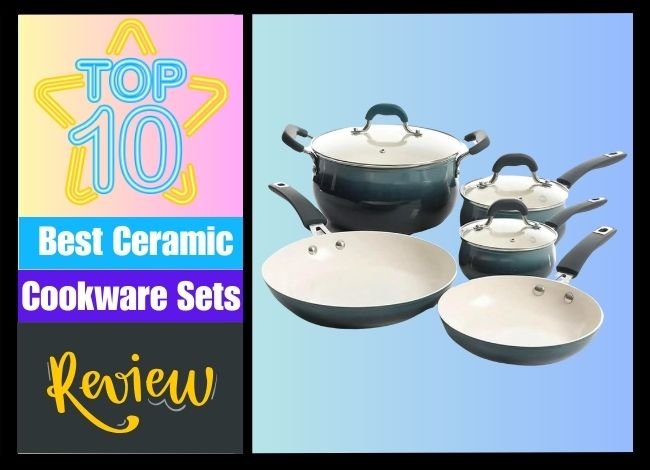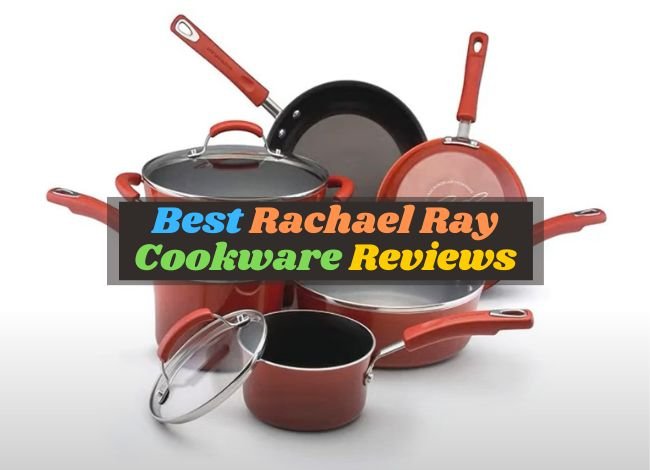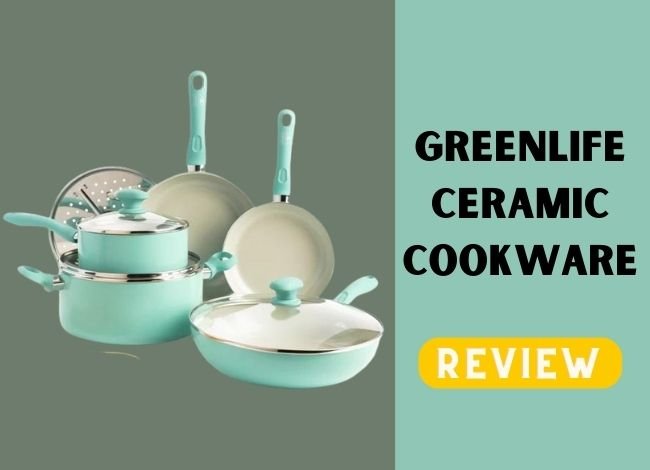Last Updated on January 30, 2024
Dutch ovens are beloved kitchen staples known for their durability and versatility. However, even the sturdiest Dutch oven can fall victim to the occasional chip in its enamel coating. This situation raises important questions for any home cook: Can you still use a chipped Dutch oven, and is there a way to repair it? Understanding the implications of using a damaged Dutch oven and exploring repair options are crucial for maintaining the longevity and safety of your cookware. In this article, we delve into these concerns and offer insights into the use and maintenance of Dutch ovens, even touching on unique cooking methods such as stir-frying in these versatile pots.
Is it okay to use a Dutch oven that has been chipped, apart from that?
When your Dutch oven suffers a chip in its enamel, it’s natural to wonder if it’s still safe for cooking. Generally, a small chip on the exterior isn’t a cause for alarm and won’t affect the oven’s performance. However, chips on the inside surface can lead to rust or flaking, contaminating food. It’s important to assess the size and location of the chip. Minor surface chips can often be used cautiously, but if the chip exposes the cast iron beneath, it’s advisable to avoid cooking acidic foods, as they can react with the iron. Regularly inspecting your Dutch oven for further damage is crucial in ensuring continued safe use.
Related Post: Is it safe to use vintage enamel cookware?
Is it possible to get my Le Creuset re-enameled?
Le Creuset is a renowned brand known for its high-quality enamel Dutch ovens. Unfortunately, re-enameling a Le Creuset, or any Dutch oven, isn’t typically a viable option. The enameling process requires extremely high temperatures, far exceeding what can be achieved in standard repair shops. Attempting to re-enamel a Dutch oven at home is not recommended due to these technical requirements and potential safety hazards. If your Le Creuset is chipped, consider contacting their customer service for advice. In some cases, warranties may cover certain types of damage, offering replacement options.
Is it safe to use damaged enamel cookware in this situation?
Using damaged enamel cookware, particularly when the damage is on the interior, can pose safety risks. If the enamel has chipped away to expose the underlying cast iron, there’s a risk of rust, especially if the cookware isn’t properly seasoned. Additionally, continued use of a chipped Dutch oven can lead to further degradation of the enamel, potentially leading to flakes of enamel in your food, which is undesirable and potentially harmful. Replacing or professionally repairing cookware with significant enamel damage is recommended to ensure safety and quality in your cooking experiences.
Is it possible to stir fry in a Dutch oven?
While Dutch ovens are not traditionally used for stir-frying, their heavy construction and excellent heat retention make them surprisingly suitable for this cooking method. The key is to properly preheat the Dutch oven to achieve a high enough temperature for stir-frying. Remember that Dutch ovens retain heat well, so regulate the temperature to prevent overheating the oil. Though they are heavier than typical works, their deep and wide structure is ideal for tossing and stirring ingredients. This method might not be as efficient as using a wok, but it can be a great alternative when it is unavailable.
Related Post: Rachael Ray Hard Anodized vs Hard Enamel Cookware: Which Cookware Is Better?
Is it Possible to Bake a Dutch Oven in the Oven?
Many cooking enthusiasts often wonder if they can bake a Dutch oven in a conventional oven. The answer is a resounding yes. Dutch ovens are designed for versatility and can withstand high temperatures, making them perfect for oven use. They are ideal for slow cooking, baking, and roasting due to their ability to maintain consistent heat. The heavy lid of Dutch oven seals in moisture and flavor, making it excellent for baking bread or slow-cooking stews. When using your Dutch oven in an oven, always check the manufacturer’s maximum temperature guidelines and ensure that any plastic components are oven-safe. This versatility is one of the reasons why repairing chipped enamel on a Dutch oven is worthwhile, as it preserves its multifunctional use.
Is Enamel the Same as Ceramic in Appearance?
When repairing a chipped enamel Dutch oven, it’s essential to understand the difference between enamel and ceramic. Enamel is a type of vitreous coating applied to metal, typically cast iron, in Dutch ovens. It is smooth, hard, and heat-resistant, providing a non-stick and easy-to-clean surface. In contrast, ceramic is a kiln-fired clay-based material and is often used in cookware. While both materials have a glossy appearance, enamel is more durable and less prone to chipping and cracking compared to ceramic. However, when enamel does chip, it can expose the underlying metal, leading to rust if not addressed. Thus, understanding these differences is crucial for appropriate Dutch oven maintenance and repair.
Is a Cast-Iron Casserole the Same as a Dutch Oven in Terms of Functionality?
Comparing a cast-iron casserole dish with a Dutch oven, we find similarities and differences in functionality. Both are excellent for slow cooking, braising, and stewing. However, a Dutch oven is typically heavier and comes with a tight-fitting lid, making it more suitable for oven use and retaining moisture and flavor in dishes. Cast-iron casseroles might not always be oven-safe and can have various types of lids. When considering the repair of chipped enamel on a Dutch oven, remember that its functionality is not just limited to stovetop cooking but extends to baking and roasting in an oven, which may not be the case for all cast-iron casseroles.
Related Post: Is a Caldero the same as a Dutch oven?
Is it Harmful to Cook with a Rusted Pan?
Cooking with a rusted pan, especially in a chipped enamel Dutch oven, can be harmful. Rust is an iron oxide that forms when iron and oxygen react with moisture. It’s not toxic in small amounts but can impart an unpleasant taste and color to your food. Additionally, rust can further degrade your cookware. If your Dutch oven has a chip in the enamel, exposing the iron to moisture and leading to rust, it’s essential to address the issue promptly. While small rust spots can be cleaned and seasoned to prevent further corrosion, significant damage might require professional repair or replacement.
Is Enameled Cast Iron a Superior Material than Cast Iron?
Enameled cast iron, often used in Dutch ovens, combines the excellent heat retention and even cast iron heating with a non-reactive, easy-to-clean enamel coating. This makes it superior to traditional cast iron in certain aspects. Unlike bare cast iron, enameled cast iron doesn’t require seasoning and won’t react with acidic foods, making it more versatile. However, it’s also more susceptible to chipping and cracking. Repairing chipped enamel on a Dutch oven can be challenging, but it is necessary to maintain its functionality and aesthetic appeal. While both materials have their advantages, the choice depends on personal cooking preferences and maintenance willingness.
What is the Source of Staub’s High Price?
Staub, a brand synonymous with quality in cookware, often commands a higher price due to several factors. First, the materials: Staub uses premium cast iron and a unique enamel coating, ensuring exceptional heat retention and durability. The manufacturing process, deeply rooted in French culinary tradition, involves meticulous craftsmanship and strict quality control, contributing to the cost. Furthermore, Staub’s innovative designs, often incorporating self-basting spikes and tight-fitting lids, enhance cooking efficiency. These features, combined with a lifetime warranty, justify the investment in a Staub Dutch oven, making it a favorite among professional chefs and home cooks alike.
What is the Purpose of a Dutch Oven?
The Dutch oven is a culinary multitasker, beloved for its versatility. This heavy-duty pot, traditionally made of cast iron and lined with enamel, is perfect for a range of cooking methods. Its thick walls and tight-fitting lid make it ideal for slow-cooking, braising, and stewing, allowing flavors to meld beautifully. The enamel coating provides a non-reactive surface, making it suitable for cooking acidic foods like tomato-based sauces without affecting the taste or the cookware. Dutch ovens are also oven-safe, making them perfect for baking bread or roasting meats. Their ability to retain heat helps maintain a consistent temperature, ensuring even cooking.
Is it Possible to Restore Cracked Enamel Cookware?
Repairing cracked enamel on cookware, especially in a Dutch oven, can be challenging. While small chips in the enamel might not affect the cookware’s functionality, larger cracks can compromise its integrity. DIY repair kits are available, but they often offer a temporary solution and might not be suitable for cookware used at high temperatures. If the damage is significant, replacing the cookware is advisable, as repairing it might not be safe for cooking. For minor chips, avoid cooking acidic foods in the damaged area and regularly monitor the cookware’s condition.
Is it Possible to Restore Damaged Enamel?
Restoring damaged enamel, especially minor chips, is feasible with the right approach. Enamel repair kits, designed for cookware, can fill small chips, preventing them from worsening. These kits typically contain a food-safe enamel paint, which, when applied correctly, can withstand high temperatures and restore the cookware’s appearance. However, following the manufacturer’s instructions carefully is crucial and ensuring the cookware is thoroughly cleaned before applying the repair material. Remember that while this can extend the life of your Dutch oven, it may not be a permanent solution for larger damages.
Is it Okay to Consume Food from Enamel?
Using enamel cookware, like a Dutch oven, for food preparation is generally considered safe. The enamel coating is non-reactive and doesn’t leach chemicals into food, making it ideal for cooking a wide range of dishes. However, if the enamel is chipped or cracked, assessing the severity is essential. Minor chips might not pose a significant risk, but avoiding cooking highly acidic foods in the damaged area is advisable. In cases of significant damage, where the underlying cast iron is exposed, it’s best to replace the cookware to prevent rust and potential food contamination.
Is the Enamel Covering Non-Stick in Nature?
Understanding the nature of the enamel in your Dutch oven is crucial before attempting any repairs. Enamel coatings on Dutch ovens are known for their smooth, non-stick properties, making them a favorite in kitchens. This enamel is essentially a type of glass fused to the cast iron surface at high temperatures. It is non-reactive and provides an excellent cooking surface that reduces the need for excessive oil. However, its non-stick nature does not imply invulnerability. The enamel can chip if the Dutch oven is dropped or banged against a hard surface. Understanding this characteristic is essential to selecting the right repair method that doesn’t compromise the non-stick surface and maintains the cookware’s functionality.
What is the Best Way to Repair an Enamel Bath?
Repairing an enamel bath can provide insights into fixing a chipped enamel Dutch oven. The primary goal is to restore the surface without causing further damage. A common approach for an enamel bath is using a specialized enamel repair kit. These kits typically include a filler and a hardener, which provide a durable and heat-resistant repair when mixed and applied. Following a similar approach for your Dutch oven is advisable. Start by carefully cleaning the chipped area, mixing the filler and hardener, and applying it to the chip. Ensure the repaired area is smooth and even with the rest of the surface. Allow it to dry completely before using the Dutch oven again. This method helps maintain the integrity of the enamel and prolongs the life of your cookware.
Is it Possible to Put Cooking Spray on Cast Iron?
The question of using cooking spray on cast iron, including enameled cast iron, is often debated. While traditional cast iron benefits from seasoning with oils, the situation is different for enameled cast iron Dutch ovens. These usually have a glossy enamel finish that doesn’t require seasoning. Cooking sprays, however, can sometimes leave a sticky residue that is hard to clean and might degrade the enamel over time. Therefore, it’s recommended to use traditional oils or butter for cooking. If you’re dealing with a repaired chip in the enamel, it’s even more crucial to avoid cooking sprays as they may react with the repair materials. Instead, use gentle cooking methods and proper maintenance to preserve the enamel’s integrity.
Conclusion
Repairing a chipped enamel in a Dutch oven requires careful consideration of the cookware’s material and usage. Understanding that the enamel is non-stick, using the right repair methods akin to fixing an enamel bath, and avoiding cooking sprays on cast iron are key steps in maintaining your Dutch oven. With proper repair and maintenance, your enameled cookware can continue to be a valuable and long-lasting tool in your kitchen.




